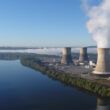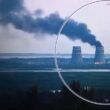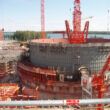Don’t judge the nuclear industry or NRC by standards and incidents from 30 years ago
By Anthony R. Pietrangelo, May 8, 2008
The Nuclear Regulatory Commission (NRC) is facing a significant challenge as it seeks to fulfill its responsibilities to ensure the safe and secure use of commercial nuclear technology. For the first time in decades, the NRC will soon conduct the licensing review of several new applications to build and operate nuclear power plants, as well as review the first ever application for a used fuel repository. In addition, it will continue its ongoing oversight of nuclear reactors, materials licensees, and used fuel management. Compounding this challenge, the NRC is hiring hundreds of new personnel, while many of its most experienced leaders retire. But compared to where the Atomic Energy Commission and the NRC started from in 1974, it’s clear that the commission is fully capable of regulating industry in an effective manner.
David Lochbaum’s piece is a trip down memory lane. In hindsight, there clearly were areas where the NRC and industry could have, and should have, performed better. There’s still room for improvement, which I’ll get to in a moment. But I believe that the NRC accomplishes its mandate to enforce its regulations. Both the NRC and its licensees experienced many growing pains and learned many lessons since the late 1960s when the first commercial plants went on line. Andy Kadak points to the lack of safety focus and the heavy focus on compliance that dominated the regulatory process into the 1990s. The subjectivity of that process also contributed to instability in regulatory oversight. What constituted compliance often was in the eye of the beholder. NRC’s enforcement policy was used liberally by the commission when noncompliance was identified, and violations and civil penalties were issued accordingly; there was no hesitancy by the NRC to exercise enforcement.
It wasn’t until the mid- to late-1990s that probabilistic risk analysis and performance-based regulatory approaches were meaningfully incorporated into the regulatory process. That movement culminated in 2000 with the NRC’s revised Reactor Oversight Process (ROP), a more safety-focused, objective, and transparent program. David, the Nuclear Energy Institute, and other stakeholders encouraged the NRC to move in this direction. While the ROP continues to evolve, it’s widely recognized as a significant improvement.
Today, you need only to review the industry trends monitored by the NRC, including performance indicators and inspection findings captured by ROP, to conclude that the current fleet of plants is operating more safely and reliably than ever before. This couldn’t have occurred without highly competent plant operators and an effective NRC. While David and Victor Gilinsky cite notable lapses (some more than 30 years old, some more recent), the data demonstrates that high levels of safety and reliability have been sustained.
But there is room for improvement. Andy cites the need to move further forward with the use of risk insights. Victor cites the need for greater public confidence in the NRC if new build is to become a reality. I agree with both, although according to a recent telephone survey by Bisconti Research two-thirds of the public believes U.S. reactors are safe and secure. Deterministic regulations developed 40 years ago based on worst-case scenarios to make up for the lack of operating experience and data must be improved and based instead on decades of real-world experience. Furthermore, a Government Accountability Office sting operation that revealed the NRC issued a materials license to a nonexistent entity only undermines public confidence in the regulator and the industries it regulates.
Accountability and discipline throughout the commission will also be critical going forward as the newly staffed NRC approaches current and future challenges. New ideas, fresh thinking, and modern information technology should help the NRC become more effective and efficient. But there also must be discipline to make changes through the proper channels, and not through new interpretations of past regulatory practices that would undermine the stability of the regulatory process.
Topics: Nuclear Energy
Share: [addthis tool="addthis_inline_share_toolbox"]














